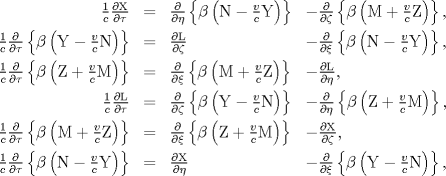Cosmology Black Holes/White Holes
- Oct 30, 2021
- 2 min read
This theorem is saying two things at once: that there are no cross terms, and that both GIJ(v) and f(v) are functions of the vI alone, independent of the ui. Proving the theorem is a mess, but you are encouraged to look in chapter 13 of Weinberg. Nevertheless, it is a perfectly sensible result. Roughly speaking, if GIJ or f depended on the μi then the metric would change as we moved in a single submanifold, which violates the assumption of symmetry. The unwanted cross terms, meanwhile, can be eliminated by making sure that the tangent vectors are orthogonal to the submanifolds - in other words, that we line up our submanifolds in the same way throughout space.
We are now through with handwaving, and can commence some honest calculation. For the case at hand, our submanifolds are two-spheres, on which we typically choose coordinates
Since we are interested in a four-dimensional spacetime, we need two more coordinates, which we can call a and b. The theorem is then telling us that the metric on a spherically symmetric spacetime can be put in the form
Here "r"(a, b) is some as-yet-undetermined function, to which we have merely given a suggestive label. There is nothing to stop us, however, from changing coordinates from (a, b) to (a, r), by inverting "r"(a, b). (The one thing that could possibly stop us would be if r were a function of a alone; in this case we could just as easily switch to (b, r), so we will not consider this situation separately.
This is the best we can do for a general metric in a spherically symmetric spacetime. The next step is to actually solve Einstein's equations, which will allow us to determine explicitly the function. It is unfortunately necessary to compute the Christoffel symbols for (7.13), from which we can get the curvature tensor and thus the Ricci tensor. If we use labels (0, 1, 2, 3) for (t, r,) in the usual way, the Christoffel symbols.










Comments